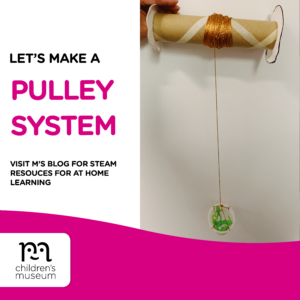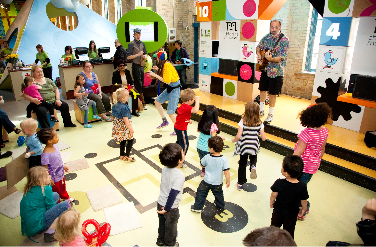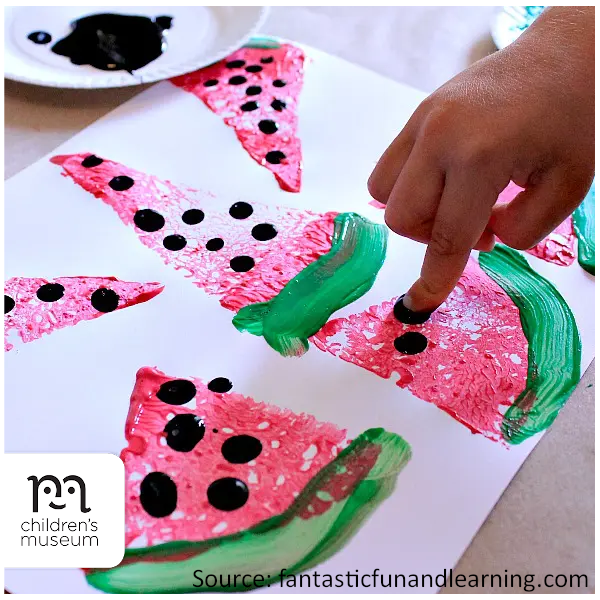ALL ABOARD: WE’RE GATHERING STEAM
This week’s area of focus is ENGINEERING, and we’re making a pulley system.
Even though pulleys look simple, they are powerful, ingenious machines that are used in everyday life to help make jobs easier. Your kids will love learning about this simple machine.
You will need:
- An old ribbon spool
- Dowels/chopsticks
- String
- A container
Once you’re done building your machine, take turns putting different items like toys or snacks in your pulley and reeling it up. You can learn more here about pulley systems.
If you try this at home, please share how it went and don’t forget to tag us on our social media pages so we can enjoy it too!







